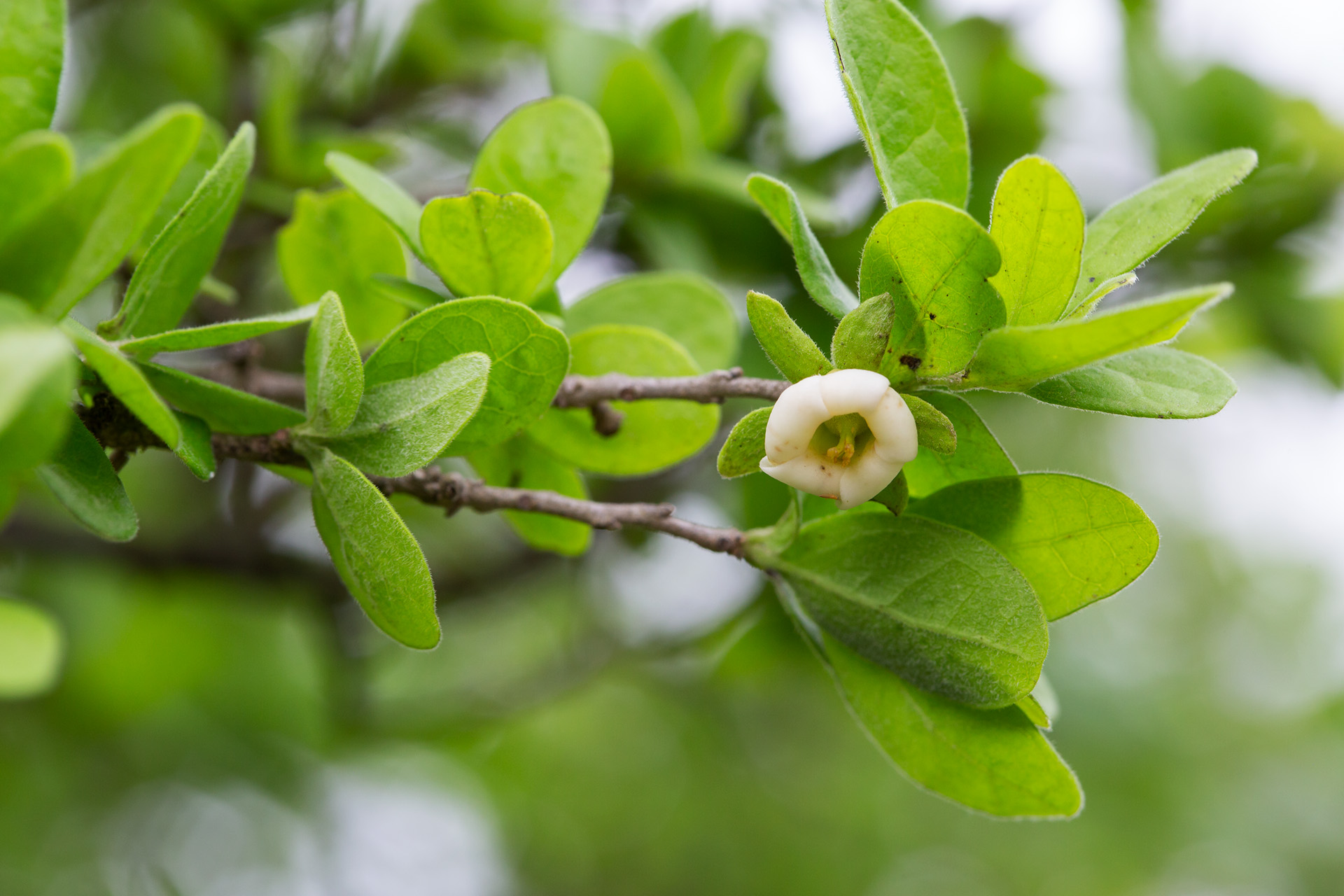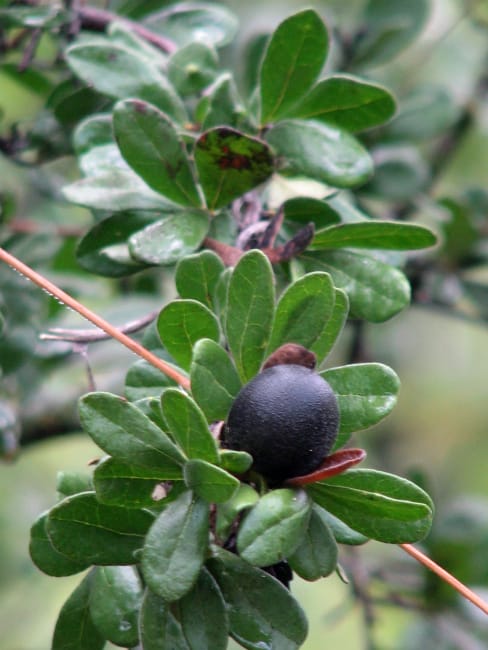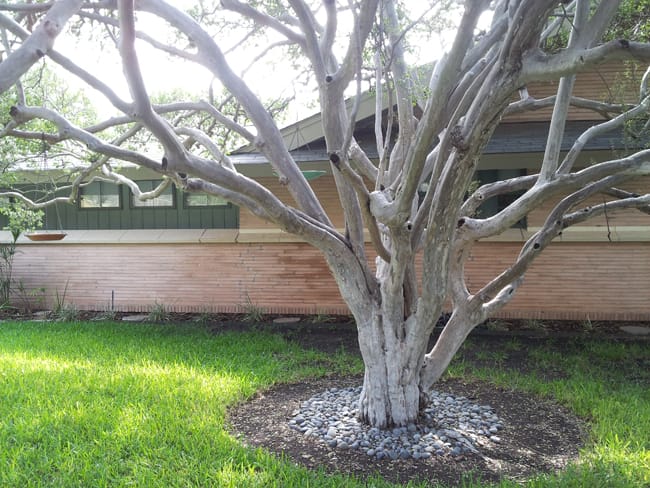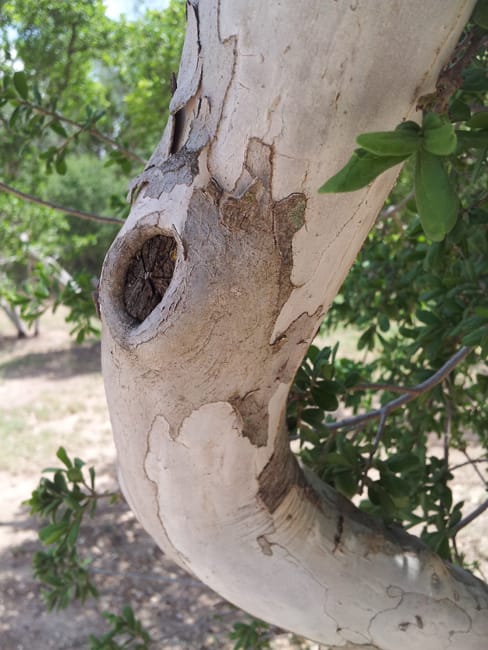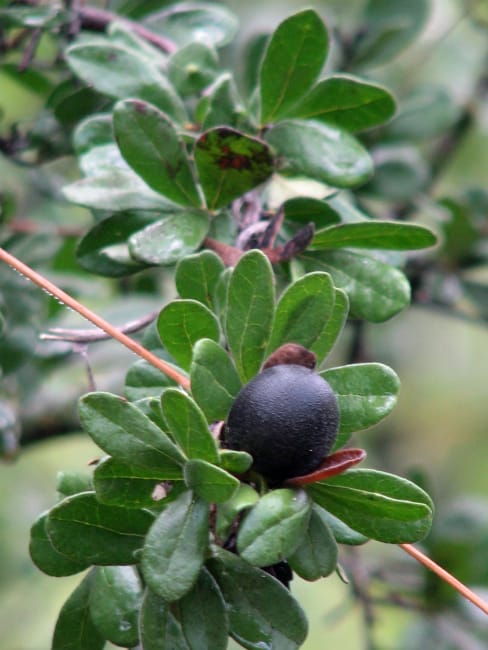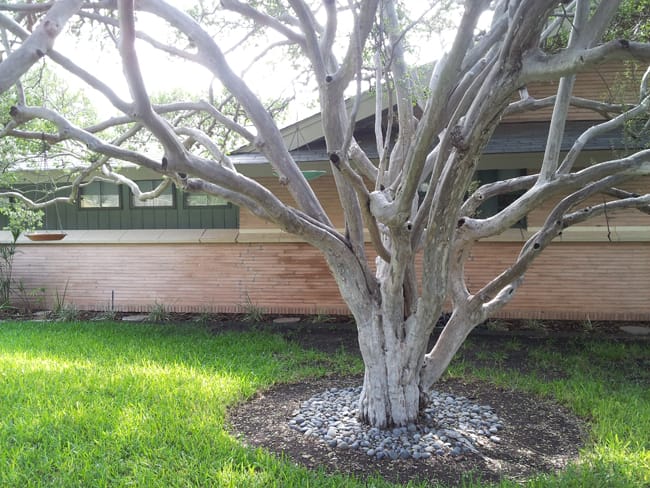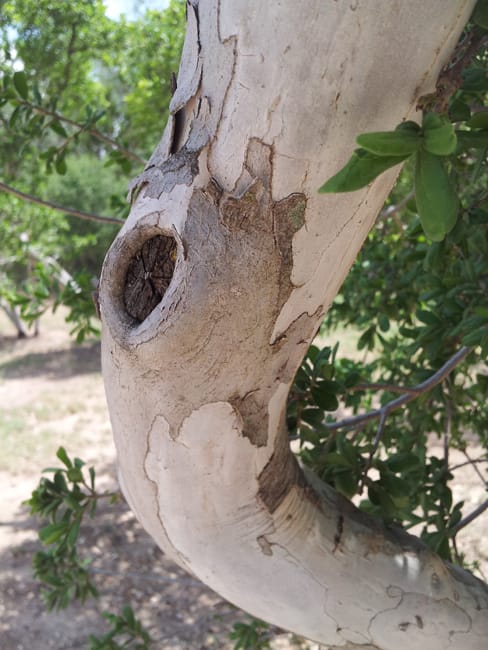Full sun or partial shade. Deciduous, with multiple twisted trunks forming a dense, twiggy crown. Silvery bark peels away to reveal white layers, in a manner similar to crape myrtle.
Female specimens bear sweet black fruit in late summer that resembles figs or prunes in taste. (The black juice can stain, so brush your teeth afterwards.) Persimmons are either male or female; for the fruit, you’ll need both.
Persimmon is very slow-growing but long-lived, strong-wooded, and striking. Mature specimens can be found throughout older residential landscapes and courtyards: just look for the glowing white tree. It is ubiquitous in the wild in South Texas, appearing as understory or grouped in small groves.
Occasional training or shaping; fruit litter may create a mess in paved areas.
Pruning is always optional. Cuts should be made at a bud or branch. Texas persimmon has a natural craggy, winding form. As with any tree, remove no more than 25% of the total canopy during any five-year cycle.
